'The pressing point is that, for air passengers to get home safe, a combination of factors needs to work in perfect harmony.
'It’s time for India’s aviation industry to wake up and ensure that this orchestration is in good working order,' says Anjuli Bhargava.
Illustration: Dominic Xavier/Rediff.com
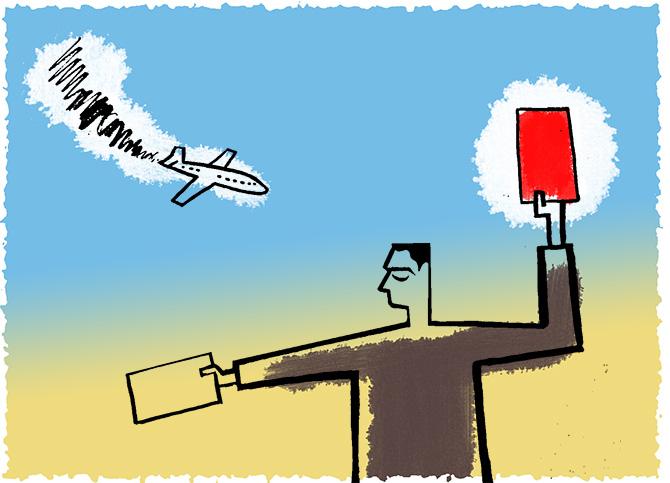
If you are a frequent flier, the last few months will have been harrowing.
The country’s largest airline, IndiGo, was cancelling flights virtually every day while another major airline, Jet Airways, cancelled out altogether by shutting shop.
This threw air schedules out of gear across the country.
Yet, that will have been merely inconvenient.
What was downright alarming was the frequency of safety incidents or accidents being reported across Indian airports -- and across airlines.
Confusion and chaos prevailed both up in the air and on the ground.
In Delhi, seven ground accidents were reported in 2019 alone.
Aircraft engines being ferried were hit by a ladder, by two power units and in yet another case by a toilet cart.
In Mumbai, one aircraft was hit by a tractor, another by an empty container trolley and a third by a flying object.
By mid-year, the ground crisis had escalated, quite literally.
Over three days towards the end of June and early July, five aircraft (three SpiceJet, two Air India Express) veered off runways during landing, one serious enough to be classified as an “accident”.
Two weeks later a Vistara aircraft almost ran out of fuel in the air and called “May Day”.
On July 16, a SpiceJet engineer lost his life after getting stuck in an aircraft landing gear door, a gruesome and tragic death. (And on August 23, a man managed to scale the wall of Mumbai airport and wander on to the runway.
So severe was the commotion caused by the spate of misfortunes that it woke up even India’s somnolent Directorate General of Civil Aviation (DGCA).
The DGCA conducted safety audits at some airlines, issued a flurry of circulars and even decided to conduct a quarterly ground safety audit.
Airlines too beefed up their security.
At SpiceJet, heads rolled and new safety guidelines were put in place.
The question now is: Are all the players in the aviation sector doing enough to ensure that occasional incidents do not turn into serious accidents?
Crew
A consistent and recurring problem with pilots and cabin crew is their predilection for alcohol and tendency to report for work under the influence.
Older pilots allege that many of the younger ones are more concerned with living the high life.
They have little interest in aircraft or flying, say the veterans.
In 2019 alone, according to DGCA sources, 200 pilots and cabin crew in India were suspended after they failed breathalyser tests.
Authorities need to consider whether suspending the licence - three months for first-time failure before a flight and one-year suspension post flight - is deterrent enough.
Many countries jail offenders for the same offence.
A second problem is sheer irresponsibility.
In the SpiceJet accident on July 1, for instance, the pilot told his management that his breaching the landing “lakshman rekha” was business as usual.
He’d done it several times before, as did his colleagues, he said, brazenly.
Airlines
Airlines run on wafer-thin margins and the focus remains on cutting costs.
At times, this can compromise safety.
Take, for instance, the mad rush that often ensues when a low-fare airline flight lands.
In a bid to minimise turnaround time, passengers can be seen boarding even as passengers from the earlier flight are yet to alight.
Since flying is generally safe, a certain laxity can creep into the airline’s training and operations departments.
This is particularly true when it comes to aircraft stabilisation prior to landing.
No matter which airline one considers, pilots tend to take chances and fail to go around as required if all parameters are not stable.
Senior DGCA officials say they have found lapses in all airlines in India in recent audits.
A recent Airline Pilots Association of India (ALPA) note on safety points out that a DGCA circular on supervised take-off and landing disallows a captain from letting his co-pilot perform take-offs and landings if the runway is wet, if there are tailwinds and in certain other conditions.
This effectively prevents co-pilots from getting hands-on experience.
“The co-pilot finds himself thrown in at the deep end when he becomes a commander,” says ALPA president Sam Thomas.
He says that operating in India during the monsoon is highly challenging and many youngsters are ill-equipped to handle the adverse weather situations, and simply just call in sick to avoid flying.
Airports
In general, airports need to be far more focused on enhancing safety features of both the runway and airside operations.
ALPA argues that: “While private players are involved in developing airports in metros, these are limited to glossy terminal buildings with eateries and stores.
"The runways, their lighting and instrument landing facilities leave a lot to be desired.”
The association points out that of three of the busiest airports, Mumbai, Delhi and Bengaluru, only Delhi has CAT3 ILS -- technology that helps aircraft land in poor visibility conditions -- while the latter two have the older CAT1 ILS.
Pilots and industry observers argue that there is a marked reluctance to shut down operations even when extreme adverse weather conditions prevail.
The reluctance owes to commercial reasons and the pressure exerted by airline operators, many argue.
Pilots further point out that most airports lack critical disabled aircraft retrieval kits (DARK) leading to extended periods of closure for the smallest of incidents of disabled aircraft.
ALPA argues that a report published and accepted by the government in the early 1990s mandates airport authorities to provide accurate friction coefficients of runways to enable the pilot to accurately judge the level of braking required.
This hasn’t happened.
Pilots are often left to their own devices and, as was evident in the recent incidents, some were unable to judge properly.
DGCA
The DGCA is required to keep tabs on no less than 40,000 individuals -- pilots, co-pilots, engineers and cabin crew. Not only is the organisation understaffed, it is usually headed by non-technical IAS officers.
It simply does not have the expertise and pays too poorly to attract the right talent.
This has led to a situation where the organisation has been beset with petty corruption for decades and historically under-performed.
A single statistic highlights why.
The US Federal Aviation Authority has an annual budget of $ 17 billion (in 2019) whereas DGCA’s annual budget is currently at Rs 2 billion ($ 28 million).
This despite the fact that air traffic growth in India is among the highest in the world, crossing double digits most years.
Every once in a while, the DGCA gets a well-meaning chief who tries to usher in change, like the current incumbent, Arun Kumar. Post the June and July incidents, the authorities have been quite aggressive and audits have been carried out at airlines.
A ground audit has been proposed for the first time, a series of circulars have been issued, pilots have been suspended and almost everyone has been pulled up.
“We are taking action wherever required and many changes have been and are being brought in,” says Kumar.
He argues that India’s safety record despite its aggressive pace of growth has been reasonably good, although there is always scope for improvement.
Sources say that most of the changes DGCA tries to make are made redundant by the fact that the man at the top keeps changing and the next office-bearer often negates the work done by his predecessor.
Moreover, issuing circulars is one thing and enforcement quite another.
Shakti Lumba, former commander, aviation expert and outspoken critic of the body, says, “DGCA can issue all the circulars in the world but unless they are enforced they are as good as the paper they are printed on.”
A senior Air India commander adds, “DGCA just conveniently transfers the onus onto everyone else by issuing circulars, while they themselves are not even in a position to judge whether the circulars are being enforced.”
But this may not be the organisation’s fault as much as of the system.
The larger, more pressing point is that, for air passengers to get home safe, a combination of factors needs to work in perfect harmony.
It’s time for India’s aviation industry to wake up and ensure that this orchestration is in good working order.


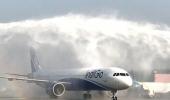


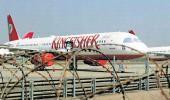




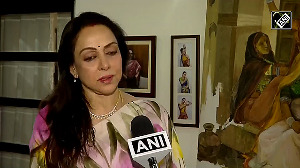

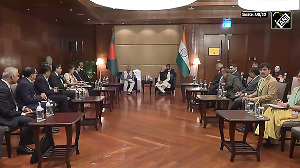
 © 2025
© 2025